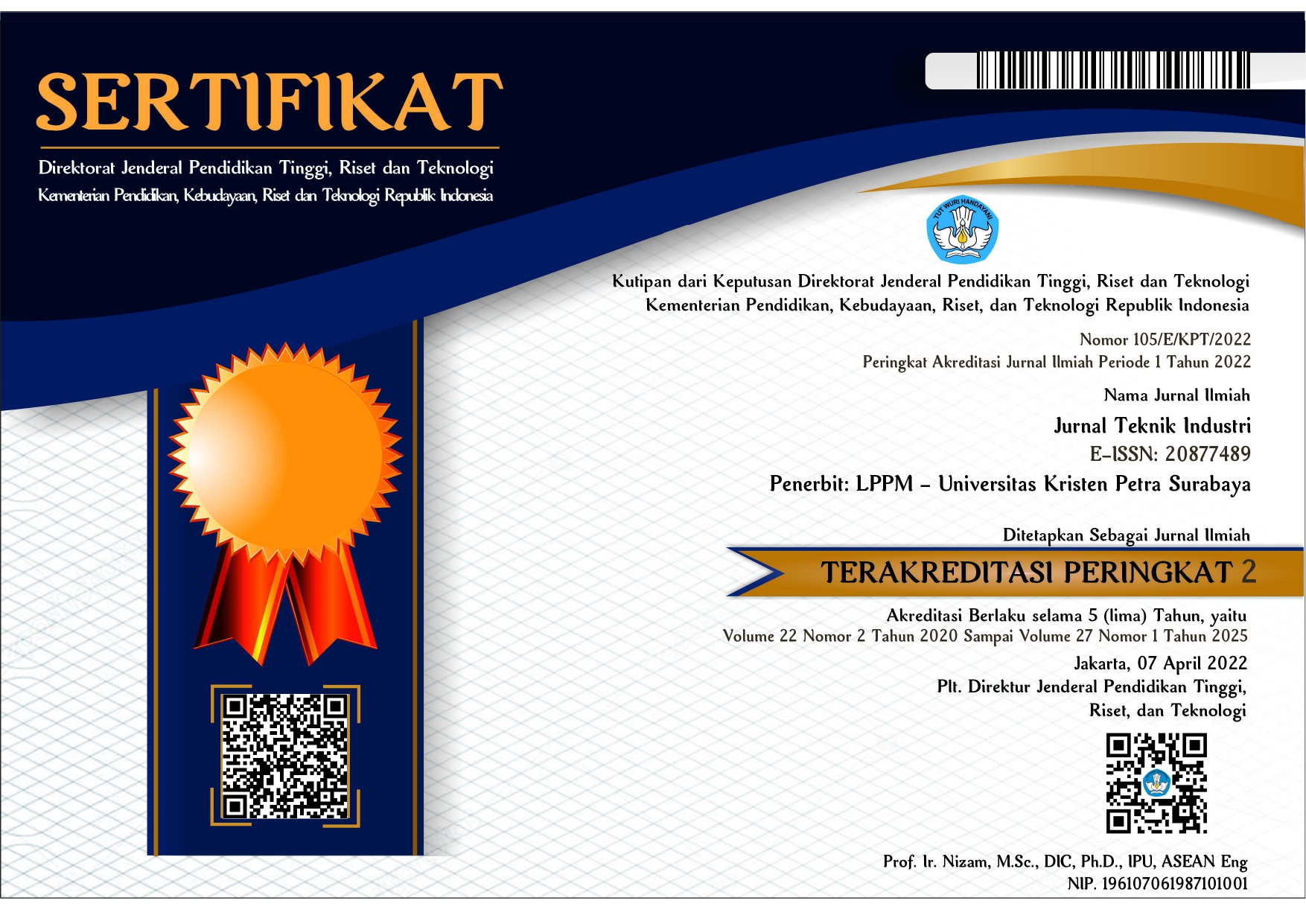Credit Scoring Modeling
DOI:
https://doi.org/10.9744/jti.16.1.17-24Keywords:
Credit scoring, Bayesian logit models, Gini coefficient.Abstract
It is generally easier to predict defaults accurately if a large data set (including defaults) is available for estimating the prediction model. This puts not only small banks, which tend to have smaller data sets, at disadvantage. It can also pose a problem for large banks that began to collect their own historical data only recently, or banks that recently introduced a new rating system. We used a Bayesian methodology that enables banks with small data sets to improve their default probability. Another advantage of the Bayesian method is that it provides a natural way for dealing with structural differences between a bank’s internal data and additional, external data. In practice, the true scoring function may differ across the data sets, the small internal data set may contain information that is missing in the larger external data set, or the variables in the two data sets are not exactly the same but related. Bayesian method can handle such kind of problem.Downloads
References
Agresti, A., Categorical Data Analysis, John Wiley & Sons. Inc., New Jersey, USA, 2002.
Andreeva, G. ,European Generic Scoring Models using Survival Analysis. The Journal of the Operational Research Society, 57(10), 2006, pp. 1180 – 1187.
Andreeva, G., Ansell, J., and Crook, J. N., Credit Scoring in the Context of the European Inte¬gra¬tion: Assessing the Performance of the Generic Models. Working paper. Edinburgh: Credit Research Centre, University of Edinburgh, 2008.
Credit Research, Rules Based Credit Scoring Methodology, Credit Research Foundation Pro¬perty, 1999.
Fox, J., Monette, G., Generalized Collinearity Diagnostics, Journal of the American Statistical Association; 87(417), 1992, pp. 178-183
Hendrickx ,J., Belzer,B., Grotenhuis, M.T., and, Lammers, J., Collinearity Involving Ordered and Unordered Categorical Variables, RC33 confe¬rence in Amsterdam 2004. http://www.xs4all.nl/~jhcjx/perturb/perturb.pdf
Robert, C., and Casella,G., Monte Carlo Statis¬tical Methods (2nd edn). Springer-Verlag. New York, 2004.
Rossi, P.E., Allenby G.M., and McCulloch, R., Bayesian Statistics and Marketing, John Wiley & Sons. Inc.,West Sussex, UK., 2005.
R-project, www.r-project.org, 2014.
Sabato, G., Assessing the Quality of Retail Customers: Credit Risk Scoring Models. The IUP Journal of Financial Risk Management, VII (1 & 2), 2010, pp. 35 – 43.
Thomas, L. C., Financial Risk Management Models. Risk Analysis, Assessment and Mana¬gement, 1992., pp. 55-70.
Thomas, L. C., Edelman, D. B., & Crook, J. N., Credit Scoring and Its Applications. Phila¬delphia: Society for Industrial and Applied Mathe¬matics, 2006.
Downloads
Published
How to Cite
Issue
Section
License
Articles published in the Jurnal Teknik Industri: Jurnal Keilmuan dan Aplikasi Teknik Industri will be Open-Access articles distributed under the terms and conditions of the Creative Commons Attribution License (CC BY).
![]()
This work is licensed under a Creative Commons Attribution License (CC BY).


















